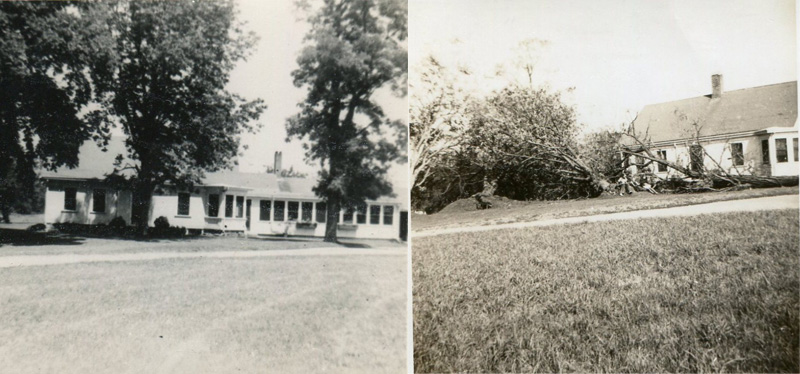From the files of the Rochester Historical Society: the Forgotten Hurricane of 1944
The writer of this piece, Connie Eshbach, is the vice president of the Rochester Historical Society. This is part of a series of Rochester history briefs.
The idea for this article came from two pictures that I found in my mother's attic. They were black and white photos of her grandmother's and my great grandmother's (Grandma Hartley’s) house. One was labeled July 1944 and showed the house with a stand of trees in front of it. The second was labeled September 1944 and while the house looked the same, the trees were knocked down. When I first glanced at the pictures, I just assumed 1938, but when I realized they were from a storm in 1944, I went to the museum to see what I could find.
The Great Atlantic Hurricane is often referred to as the Forgotten Hurricane of 1944.The storm was first spotted northeast of Puerto Rico on Sept. 9 and steadily intensified as it headed north. It hugged the coastline and while it significantly impacted the Outer Banks of North Carolina, the Mid-Atlantic states, and the Canadian Maritimes, its impact was greatest in New England.
However, the storm-caused deaths were primarily sailors caught at sea. The hurricane killed 248 aboard a Naval Destroyer off of Florida and 48 as it sank two Coast Guard Cutters on its way past North Carolina.
For the first time ever, an aircraft intentionally flew into the eye of storm to measure the winds' intensity. Unlike on later such missions, the pilots survived but they reported a terrifying ordeal. On Sept. 14, the hurricane made landfall in Port Judith, RI and then on to Massachusetts with highest sustained winds of 145 miles per hour.
The reasons that such a powerful storm has been mostly forgotten vary. First, in 1944, the country was in the middle of WWII and weather reports weren't given in order to prevent German U-Boats and submarines from using them to their advantage. Some careful warnings were put out in areas where people needed to evacuate. Usually, people were notified by a hurricane flag hung outside the local Post Office or a nearby Coast Guard station. No one learned of the Naval and Coast Guard deaths until after the war.
The second reason was that this storm came just six years after the horrific hurricane of 1938, and while it drew comparisons with that storm, it hit the coast from a different direction and it weakened more on landfall which caused a lower storm surge.
Even though the total damages were $1 million in 1944 (equivalent to $1.2 billion today) this was one-third of the damage done in 1938, in part because so much of the 1938 destruction had not been rebuilt, so there was less infrastructure to destroy.
By Sept. 16, the storm dissipated as it passed through the Canadian Maritimes.
The Rochester Historical Society will be at the Rochester Council on Aging Fair on Sept. 26. Stock up on Rochester t-shirts, sweatshirts, hats, books, maps or boxes, as well as the new Rochester face masks.












